#grand duke konstantin konstantinovich
Text

Grand Duke Konstantin Konstantinovich’s 25th wedding anniversary gift to his wife, Grand Duchess Elizaveta Mavrikievna: a silver Faberge frame featuring images of their children and residences.
#grand duke konstantin konstantinovich#kr#grand duchess elizaveta mavrikievna#romanov#russia#faberge
54 notes
·
View notes
Text

“Grand Duke Konstantin Konstantinovich "K.R." deserves more attention in history. He was a distressed but very well-respected figure at the time. He made a lot of contributions in Russia.” - Submitted by Anonymous
16 notes
·
View notes
Text
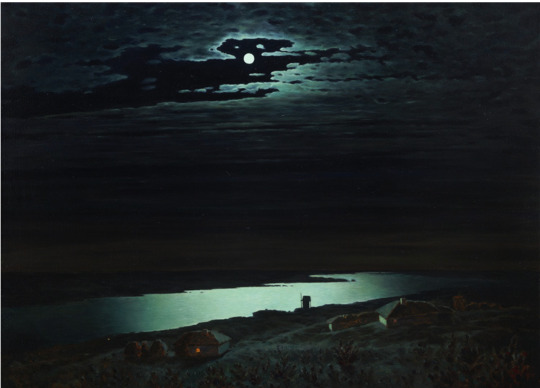
"Moonlit Night on the Dnieper" by Arkhip Kuindzhi (1841 - 1910)
This wonderful painting is at the "State Russian Museum" in Saint Petersburg (the museum is housed in the Mikhailovsky Palace.) The State Russian Museum is the former "Russian Museum of His Imperial Majesty Alexander III," established by Nicholas II in honor of his father.
This painting was purchased from the artist's work-shop by Grand Duke Konstantin Konstantinovich, who was so fond of it, he took it to sea with him while he was doing his naval training.
Arkhip Ivanovich Kuindzhi was a landscape painter from the Russian Empire. He studied painting mainly independently and at the Saint Petersburg Art Academy. He was a co-partner of traveling art exhibitions (Peredvizhniki.) In his mature period, Kuindzhy aspired to capture the most expressive illuminative aspect of the natural condition
#russian history#romanov dynasty#russian art#Grand Duke Konstantin Konstantinovich#Arkship Kuindzhi#Moonlit Night on the Dnieper
15 notes
·
View notes
Text



Death of Grand Duke K.R - June 15th 1915
“On Tuesday, June 2/15, 1915, [KR] was resting on a sofa in his study at Pavlovsk, following doctors’ orders that he attempt to relax; just a few months earlier, he had suffered from heart trouble, and everyone noted that with the death of his favorite son Oleg he seemed to have lost the will to live. His daughter Vera, then nine, happened to be sitting with him when, as she recalled, ‘I suddenly heard Papa gasping for breath. After hearing three or four more horrible gasps, I ran to Mama’s bedroom, where she was trying on a new, colorful dress, probably for our intended journey to Ostashevo as soon as Papa had recovered.’ In a rush, the young girl cried, ‘Papa can’t breathe!’ The Grand Duchess ran from her room to her husband’s study, but by the time she arrived, she found him laying quietly on the sofa, his breathing silenced. That afternoon, Grand Duke Konstantin Konstantinovich died. He was only 56 years old.”
Gilded Prism, Greg King and Penny Wilson
23 notes
·
View notes
Text

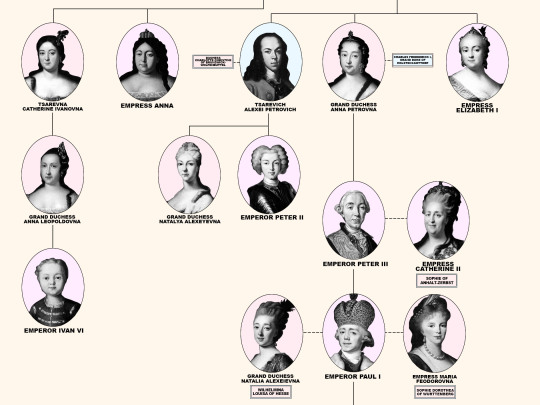
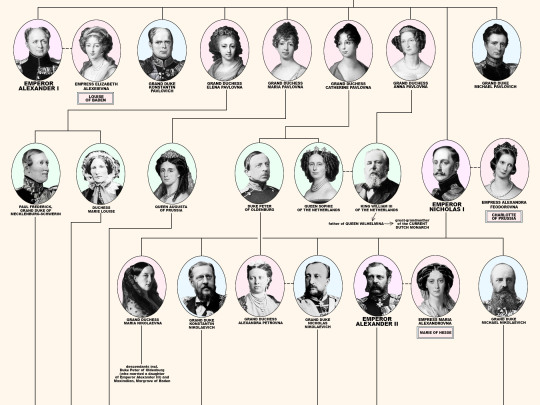
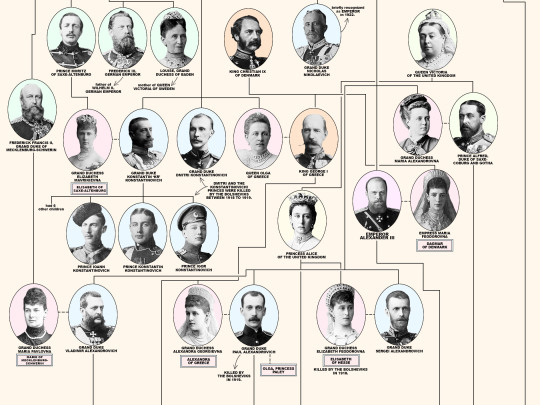

Members of the House of Romanov, the last reigning Dynasty of Russia.
From the first Romanov Russian Tsar Michael I (reigned 1613-1645) until the last Emperor Nicholas II (reigned 1894-1917). Including the 18 members of the house executed from 1918 until 1919; Grand Duke Michael Alexandrovich (13 June 1918). Nicholas II, Empress Alexandra Feodorovna, Grand Duchesses Olga Nikolaevna, Tatiana Nikolaevna, Maria Nikolaevna, Anastasia Nikolaevna, and Tsarevich Alexei Nikolaevich (17 July 1918). Grand Duchess Elizabeth Feodorovna, Grand Duke Sergei Mikhailovich, Prince Ioann Konstantinovich, Prince Konstantin Konstantinovich, Prince Igor Konstantinovich, and Prince Vladimir Paley (18 July 1918). Grand Duke Paul Alexandrovich, Grand Duke Dmitri Konstantinovich, Grand Duke Nicholas Mikhailovich, and Grand Duke George Mikhailovich (28 January 1919).
#romanovs#history#nicholas ii#alexandra feodorovna#olga nikolaevna#tatiana nikolaevna#maria nikolaevna#anastasia nikolaevna#alexei nikolaevich#myedits#peter i#peter ii#Peter iii#peter iii#Catherine the great#tsar alexei i#tsar michael#tsar paul i#alexander i#alexander ii#alexander iii#nicholas i#ancestry
273 notes
·
View notes
Text

Grand Duke Konstantin Konstantinovich of Russia, 1912.
75 notes
·
View notes
Photo

Grand Duke Konstantin Nikolaevich with his eldest son, the later disgraced Nicholas Konstantinovich
47 notes
·
View notes
Text


~ ♡ The Two Tatiana’s ♡ ~
Tatiana Konstantinovna ~ 1890-1979
The 1st daughter of Grand Duke Konstantin Konstantinovich, a third-cousin of Tsar Nicholas II. She was a very quiet child who reportedly had the talent for playing the piano. In 1911 she married Prince Bagration of Mukhrani who was serving in the Russian Imperial Guards and had two children (Teimuraz and Natalia) before he sadly perished in WWI. After this she escaped the revolution and eventually joined a nunnery before she died in 1979.
Tatiana Nikolaevna ~ 1897-1918
The second child of Tsar Nicholas II , Tatiana grew up surrounded in a close knit family who often took vacations to various places in Russia. She was a very well behaved child and was very studious and confident. She was known to be very beautiful and was often called “The Governess” by her 4 siblings for her organized ways. At the start of WWI she became a nurse and was very good in the operating rooms. During the revolution she was under house arrest with her family and eventually was executed by the Bolsheviks at the age of 21.
#🤍🤍🤍#tatiana nikolaevna#tatiana konstantinovna#romanov#romanovs#grand duchess tatiana nikolaevna#grand duchess tatiana#princess tatiana Konstantinovna#royal aesthetics#russian history#russian imperial family#imperial russia#otma#romanov family
98 notes
·
View notes
Text

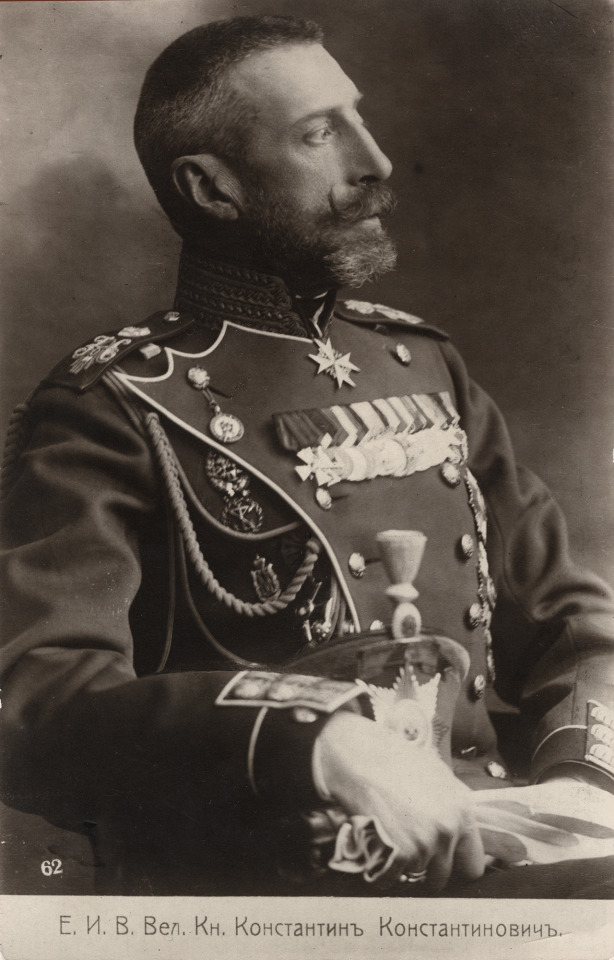
Same photo shoot: Grand Duke Konstantin Konstantinovich.
22 notes
·
View notes
Text
Women of Imperial Russia: Ages at First Marriage
I have only included women whose birth dates and dates of marriage are known within at least 1-2 years, therefore, this is not a comprehensive list. This data set ends with the Revolution of 1917.
Eudoxia Lopukhina, wife of Peter I; age 20 when she married Peter in 1689 CE
Catherine I of Russia, wife of Peter I; age 18 when she married Johan Cruse in 1702 CE
Anna of Russia, daughter of Ivan V; age 17 when she married Frederick William Duke of Courland and Semigallia in 1710 CE
Anna Petrovna, daughter of Peter I; age 17 when she married Charles Frederick I, Duke of Holstein-Gottorp, in 1725 CE
Catherine II, wife of Peter III; age 16 when she married Peter in 1745 CE
Natalia Alexeievna, wife of Paul I; age 17 when she married Paul in 1773 CE
Maria Feodorovna, wife of Paul I; age 17 when she married Paul in 1776 CE
Elizabeth Alexeivna, wife of Alexander I; age 14 when she married Alexander in 1793 CE
Anna Feodorovna, wife of Konstantin Pavlovich; age 15 when she married Konstantin in 1796 CE
Alexandra Pavlovna, daughter of Paul I; age 16 when she married Archduke Joseph of Austria in 1799 CE
Elena Pavlovna, daughter of Paul I; age 15 when she married Frederick Louis, Duke of Mecklenburg-Schwerin in 1799 CE
Maria Pavlovna, daughter of Paul I; age 18 when she married Charles Frederick, Grand Duke of Saxe-Weimar-Eisenach in 1804 CE
Catherine Pavlovna, daughter of Paul I; age 21 when she married Duke George of Oldenburg in 1809 CE
Anna Pavlovna, daughter of Paul I; age 21 when she married William II of the Netherlands in 1816 CE
Alexandra Feodorovna, wife of Nicholas I; age 19 when she married Nicholas in 1817 CE
Joanna Grudzinska, wife of Konstantin Pavlovich; age 29 when she married Konstantin in 1820 CE
Elena Pavlovna, wife of Mikhail Pavlovich; age 17 when she married Mikhail in 1824 CE
Maria Nikolaevna, daughter of Nicholas I; age 20 when she married Maximilian de Beauharnais, Duke of Leuchtenberg, in 1839 CE
Maria Alexandrovna, wife of Alexander II; age 17 when she married Alexander in 1841 CE
Elizaveta Mikhailovna, daughter of Mikhail Pavlovich; age 17 when she married Adolphe, Grand Duke of Luxembourg, in 1844 CE
Alexandra Nikolaevna, daughter of Nicholas I; age 19 when she married Prince Frederick-William of Hesse-Kassel, in 1844 CE
Olga Nikolaevna, daughter of Nicholas I; age 24 when she married Charles I of Wurttemberg, in 1846 CE
Alexandra Iosifovna, wife of Konstantin Nikolaevich; age 18 when she married Konstantin in 1848 CE
Catherine Mikhailovna, daughter of Mikhail Pavlovich; age 24 when she married Duke Georg August of Mecklenburg-Strelitz, in 1851 CE
Alexandra Petrovna, wife of Nicholas Nikolaevich the Elder; age 18 when she married Nicholas in 1856 CE
Olga Feodorovna, wife of Michael Nikolaevich; age 18 when she married Michael in 1857 CE
Maria Feodorovna, wife of Alexander III; age 19 when she married Alexander III in 1866 CE
Olga Konstantinovna, daughter of Konstantin Nikolaevich; age 16 when she married George I of Greece in 1867 CE
Vera Konstantinovna, daughter of Konstantin Nikolaevich; age 20 when she married Duke Eugen of Wurttemberg in 1874 CE
Maria Pavlovna, wife of Vladimir Alexandrovich; age 20 when she married Vladimir in 1874 CE
Maria Alexandrovna, daughter of Alexander II; age 19 when she married Alfred, Duke of Edinburgh, in 1874 CE
Anastasia Mikhailovna, daughter of Michael Nikolaevich; age 19 when she married Friedrich Franz III, Duke of Mecklenburg-Schwerin in 1879 CE
Nadezhada Alexandrovna Dreyer, wife of Nicholas Konstantinovich; age 21 when she married Nicholas in 1882 CE
Elizabeth Feodorovna, wife of Sergei Alexandrovich; age 20 when she married Sergei in 1884 CE
Olga Valerianovna Paley, wife of Paul Alexandrovich; age 19 when she married Erich von Pistolhkors in 1884 CE
Elizabeth Mavrikievna, wife of Konstantin Konstantinovich; age 19 when she married Konstantin in 1885 CE
Anastasia of Montenegro, wife of Nicholas Nikolaevich the Younger; age 21 when she married George Maximilianovich, Duke of Leuchtenberg in 1889 CE
Milica of Montenegro, wife of Peter Nikolaevich; age 23 when she married Peter in 1889
CE
Alexandra of Greece and Denmark, wife of Paul Alexandrovich; age 19 when she married Paul in 1889 CE
Sophie Nikolaievna, wife of Michael Mikhailovich; age 23 when she married Michael in 1891 CE
Victoria Feodorovna, wife of Kirill Vladimirovich; age 18 when she married Ernest Louis, Grand Duke of Hesse, in 1894 CE
Xenia Alexandrovna, wife of Alexander Mikhailovich; age 19 when she married Alexander in 1894 CE
Alexandra Feodorovna, wife of Nicholas II; age 22 when she married Nicholas in 1894 CE
Olga Alexandrovna, daughter of Alexander II; age 18 when she married Count George-Nicholas von Merenberg in 1985 CE
Maria of Greece and Denmark, wife of George Mikhailovich; age 24 when she married George in 1900 CE
Alexandra von Zarnekau, wife of George Alexandrovich; age 16 when she married George in 1900 CE
Catherine Alexandrovna, daughter of Alexander II; age 23 when she married Alexander Baryatinksy in 1901 CE
Olga Alexandrovna, daughter of Alexander III; age 19 when she married Duke Peter Alexandrovich of Oldenburg
Elena Vladimirovna, daughter of Vladimir Alexandrovich; age 20 when she married Prince Nicholas of Greece and Denmark in 1902 CE
Natalia Brasova, wife of Michael Alexandrovich; age 22 when she married Sergei Mamontov in 1902 CE
Elisabetta di Sasso Ruffo, wife of Andrei Alexandrovich; age 31 when she married Alexander Alexandrovitch Frederici in 1907 CE
Maria Pavlovna, daughter of Paul Alexandrovich; age 18 when she married Prince Wilhelm of Sweden in 1908 CE
Helen of Serbia, wife of Ioann Konstantinovich; age 27 when she married Ioann in 1911 CE
Tatiana Konstantinovna, daughter of Konstantin Konstantinovich; age 21 when she married Konstantine Bagration of Mukhrani, in 1911 CE
Irina Alexandrovna, daughter of Alexander Mikhailovich; age 19 when she married Felix Felixovich Yusupov in 1914 CE
Nadejda Mikhailovna, daughter of Michael Mikhailovna; age 20 when she married George Mountbatten in 1916 CE
Antonina Rafailovna Nesterovkaya, wife of Gabriel Konstantinovich; age 27 when she married Gabriel in 1917 CE
Nadejda Petrovna, wife of Nicholas Orlov; age 19 when she married Nicholas in 1917 CE
Anastasia Mikhailovna, daughter of Michael Mikhailovna; age 25 when she married Sir Harold Wernher in 1917 CE
59 women; average age at first marriage was 20 years old. The oldest bride was 31 at her first marriage; the youngest was 14.
9 notes
·
View notes
Text

“I look at you and I enjoy it ever
You are so beautiful, no words can tell!
Oh! I am sure that such beauty hosts
A soul that is wonderful as well.
The depth of modesty and quiet sorrow
Is in your eyes of beauty so pure
You are as serene as an angel;
And as a lady, gentle and demure.
Amidst the many earthly sins and evils
Let nothing blur the pure soul of thine,
And let us all sing praises to the Creator
Who gave such beauty to a soul divine!”
— poem for Grand Duchess Elizaveta Feodorovna by Grand Duke Konstantin Konstantinovich of Russia (KR)
Portrait by Viskovatova, courtesy of the Royal Collection .
#grand duchess elizaveta feodorovna#grand duke konstantin konstantinovich#kr#viskovatova#portrait#royal collection#poetry
49 notes
·
View notes
Text
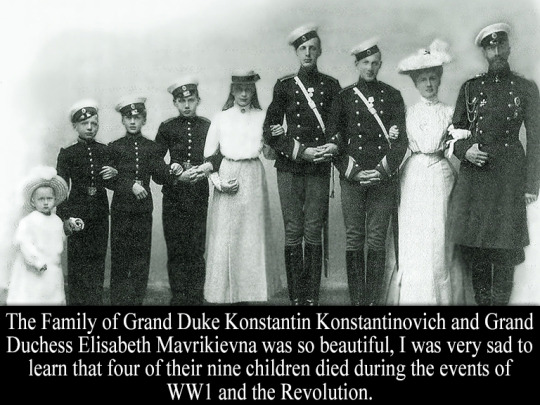
“The Family of Grand Duke Konstantin Konstantinovich and Grand Duchess Elisabeth Mavrikievna was so beautiful, I was very sad to learn that four of their nine children died during the events of WW1 and the Revolution” - Submitted by Anonymous
21 notes
·
View notes
Text

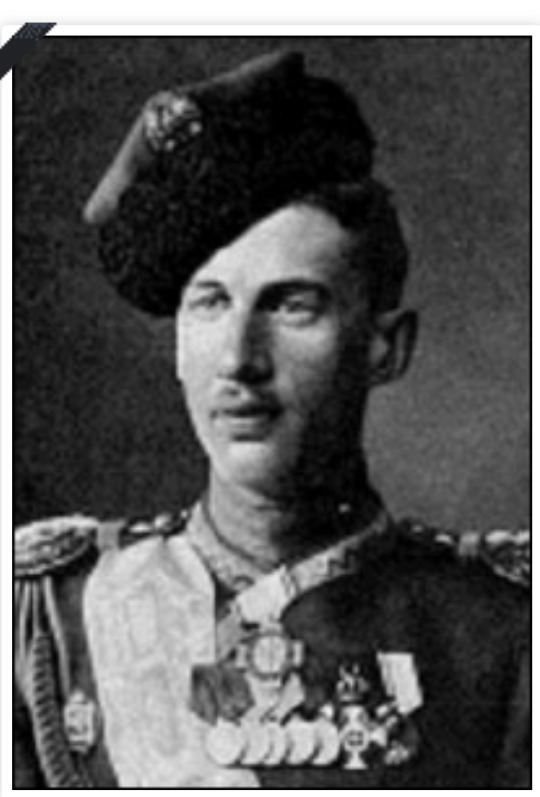
Grand Duchess Olga Nikolaevna and Prince Ioann Konstantinovich
Everybody knows by now that my favorite Romanov changes just about every week. Probably the one I "favor" most frequently is Grand Duchess Olga Nikolaevna. My heart goes out to her. In the time and place where she lived, a twenty-three-year-old girl was frequently already married and had children. Olga had to watch these and many other experiences pass her by from her captivity in Tobolks and Ekaterinburg. They say Olga was thin, withdrawn, sad, and did not seem to be coping as well as the other girls with the imprisonment. I think that Olga's "denial mechanism" was not working as well as that of the others, and she strongly suspected what was coming.
Enough of that....several names floated about (none of them seriously) as matrimonial prospects for Olga, such as that of her cousins Grand Duke Dmitry Pavlovich and Grand Duke Boris Vladimirovich. Prince Christopher of Greece and Denmark had expressed interest. Carol II of Romania had been considered. And then there was another, which I really liked for her (you may not): Prince Ioann (Ioannshick) Konstantinovich, the first-born son of Grand Duke Konstantine Konstantinovich and Grand Duchess Elizabeth Mavrikievna.
The following is a letter from Grand Duke Konstantine to his son when Ioann apparently mentioned the matter to him (not for the first time):
3 December, 1910. Pavlovsk. From bruderschaft [brotherhood, German], you very unexpectedly suddenly turn to Lubochka. You cannot marry her at this point, but without breaking the law, with which you need to familiarize yourself, taking advantage of conversations between AAs. Makarov and Kostya. During one of these conversations, ask for the federal secretary to explain to you the legalization of marriages of the members of the Imperial family. The Tatiana question has not been resolved by far, as it needs a change of the existing law. But let’s assume that it will be changed: then I advise you to be careful. Last year, you wrote to me about your love for Olga Nikolaevna and for Tanya and someone else, and now it’s Lubochka while you are still bringing up Olga Nikolaevna as well. Seems like you do not know yourself with whom specifically you are in love, but without a tested and faithful love, one should not marry.
Ioann was at that age when we fell in love every other day. He did ask the Tsar, who dismissed the idea by not taking the matter seriously, and told Ioann that his daughter was too young (in 1910, Olga would have been 15). The Empress had never liked the Konstantinovichi as potential grooms for her daughters because of their "poor health." Other than that, they were one of the few Grand Duccal families Alix liked.
Ioann married Helen of Serbia in 1911. He fought in WWI, had two children, and was eventually murdered by the Bolsheviks at Alapaevsk in the Urals (along with several other Romanovs, at least one of whom was his brother.) He was 32 years old. Olga died with her family not far from where he was killed, in Ekaterinburg at the age of 23.(gcl)
#russian history#romanov dynasty#imperial russia#nicholas ii#vintage photography#Grand Duchess Olga Nikolaevna#Princess Ioann Konstantinovich#Grand Duke Konstantin Konstantinovich
18 notes
·
View notes
Text
Prince Igor Konstantinovich of Russia
Son of Grand Duke Konstantin Konstantinovich and his wife Grand Duchess Elizabeth Mavrikievna. He was born on 10th June 1894 in Strelna.

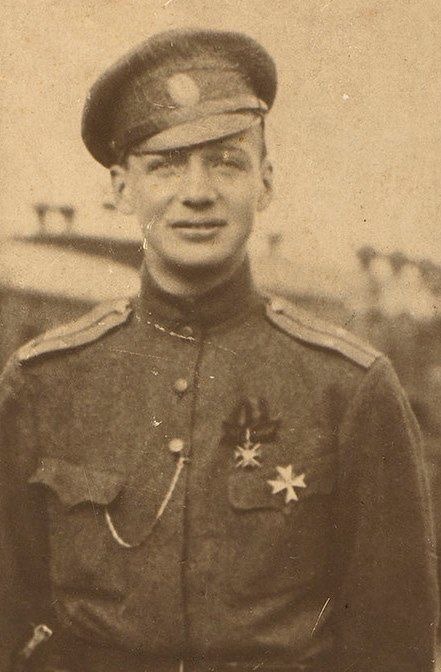


Prince Igor Konstantinovich of Russia
Son of Grand Duke Konstantin Konstantinovich and his wife Grand Duchess Elizabeth Mavrikievna. He was born on 10th June 1894 in Strelna.
He was brought up along with his older brother Prince Oleg Konstantinovich, who was two years older than him. They spent a lot of time together, sharing games and children’s toys. Prince Igor also loved animals from childhood, especially horses. While Igor was more calm, thoughtful, sentimental, and vulnerable. He waa enrolled at Page Corps, for which Prince Igor was very proud that he was now a military man, and he did not hide his joy. That at one occasion, having visited the imperial family in the new uniform, he would have traditionally wanted to kiss the Grand Duchess Maria Nikolaevna, but, remembering the instructions of the nanny, she bounced to the side: “No, no. Little girls should not kiss soldiers.” Prince Igor was not at all upset, but, on the contrary, was very pleased that he was mistaken for a real soldier. Igor loved church singing and possessing a good ear for music and voice, he willingly took part in festive services. He was so fond of the church and worship that in adolescence be was appointed clerk of the field church. He was later a clerk of the church of the Pavlovsk Palace. After graduating from the Page Corps, the Prince passed the exam for an officer and was enrolled in the Life Guards Hussar Regiment. It was in his composition that he went to the First World War. Prince Igor was the youngest representative of the Romanov dynasty in the First World War, he was only twenty years old when he went to the front. But he later suffered from pleurisy, the Prince was sent on vacation for treatment to Petrograd. He also witnessed the death of his favourite brother, Oleg. Which sent their father to an early grave.
After the death of his father, Prince Igor took care of all the economic affairs of Ostashevo, which had been his father’s estate. After recovering from his illness, he later became the Tsar’s wing-adjutant. Prince Igor had a good-natured, disposing character, the Tsar was very happy when Igor was on duty with him. Even colleagues at the front called the Prince "a cheerful person."
Prince Igor Konstantinovich was one of the several Romanovs murdered in 1918.
10 notes
·
View notes
Text
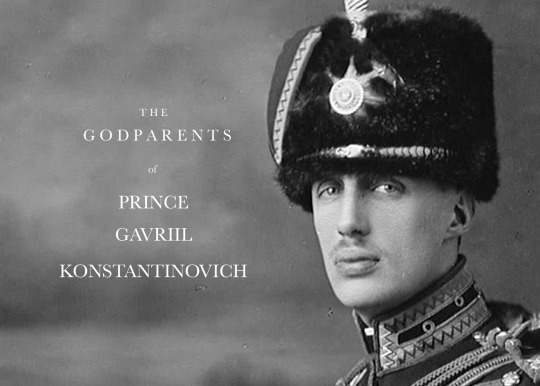


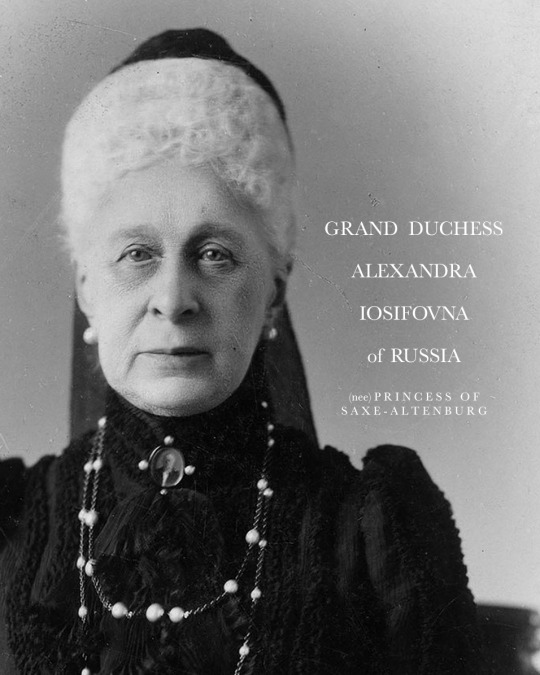
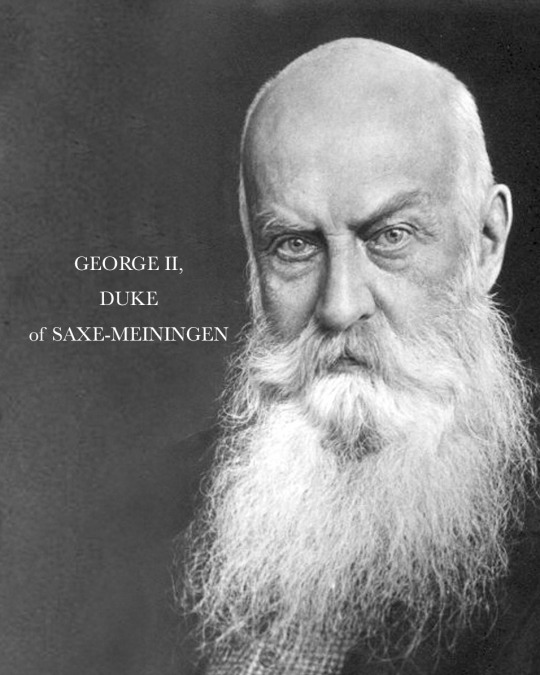

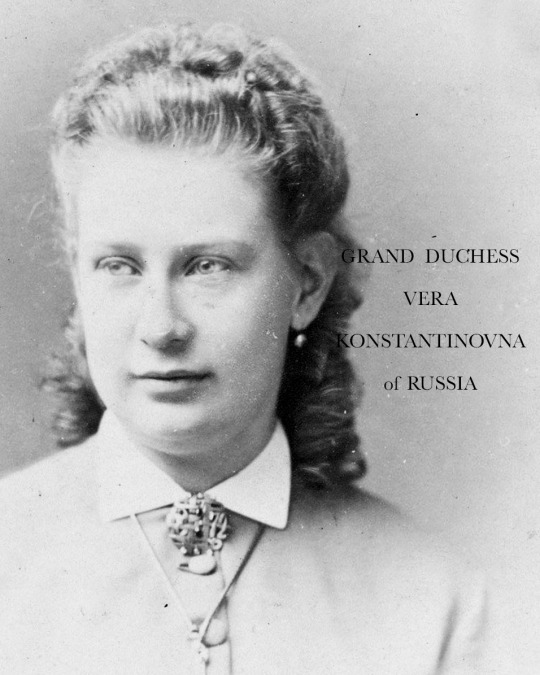



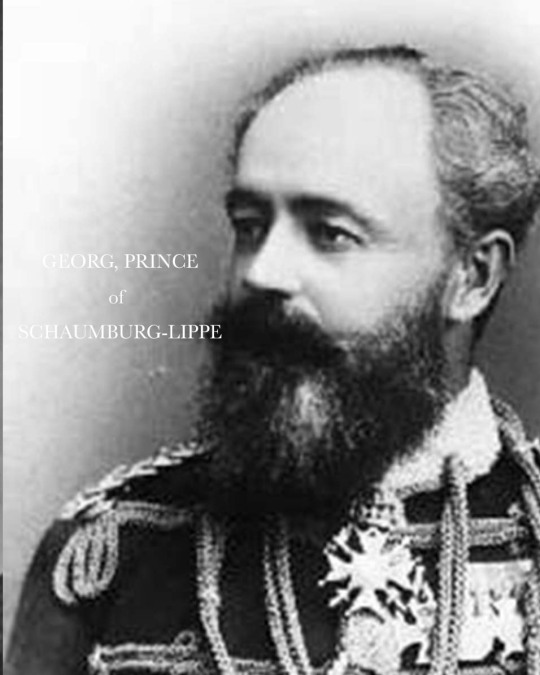
GODPARENTS OF PRINCE GAVRIIL KONSTANTINOVICH
Prince Gavriil Konstantinovich was born on 15 July 1887 in the Grand Bedroom of Empress Maria Feodorovna at Pavlovsk Palace, Saint Petersburg. The second son of Grand Duke Konstantin Konstantinovich of Russia and his German-born wife Grand Duchess Elizabeth Mavrikievna, he was christened on 8 August at 1:30 pm at a private church of Pavlovsk. His godparents were:
ALEXANDER III, EMPEROR OF RUSSIA - his father’s first cousin was named as one of his many godparents. He was highly reactionary in domestic affairs and reversed some of the liberal reforms of his father, Alexander II. He was most likely present at his young cousin’s christening.
GEORGE I, KING OF GREECE - his uncle, the husband of Queen Olga Konstantinovna, was one of his godparents. Born a Danish prince, he was elected king by the Greek National Assembly, when he was only 17. His reign of almost 50 years (the longest in modern Greek history) was characterized by territorial gains as Greece established its place in pre–World War I Europe.
GRAND DUCHESS ALEXANDRA IOSIFOVNA OF RUSSIA - his paternal grandmother, born a German princess, was listed as one of his godparents. Married to Grand Duke Konstantin Nikolaevich of Russia in 1848, she was considered a beautiful woman, but plagued by insecurity. Within the family, she was later known to be a formidable character.
GEORGE II, DUKE OF SAXE-MEININGEN - his maternal great-uncle, was the penultimate Duke of Saxe-Meiningen, reigning from 1866 to 1914. He was likely present, having been named as one of his young nephew's godparents.
ERNST I, DUKE OF SAXE-ALTENBURG - a paternal great-uncle named as a godparent of the young prince, was the reigning Duke of Saxe-Altenburg from 1853 until 1908. He was of a retiring disposition and he took little active part in running the country, of which he ruled for fifty-five years.
GRAND DUCHESS VERA KONSTANTINOVNA OF RUSSIA - one of his paternal aunt, Vera was known in royal circles as an eccentric both in appearance and behaviour. She was named as one of Gabriel's godparents, and was present at the christening. Although she kept in touch with her Romanov relatives, visiting Russia many times, she identified more closely with her adopted country, Württemberg.
GRAND DUKE DMITRI KONSTANTINOVICH OF RUSSIA - his paternal uncle, and his favourite, was also one of his godparents. He followed a military career, and was religious. He never married, and was one of several Romanov relatives executed by a firing squad at the walls of Peter and Paul Fortress during the Russian Civil War.
MARIE FRIEDRIKE, DOWAGER DUCHESS OF SAXE-MEININGEN - his maternal great-grandmother was one of his godparents. Born a Princess of Hesse-Kassel, she married the Duke of Saxe-Meiningen, with whom two children (seventeen years apart) were born.
PRINCESS AUGUSTA OF SAXE-MEININGEN - his maternal grandmother was absent at her grandson's christening, of whom she was named as one of his godparents. In 1862, she married Prince Moritz of Saxe-Altenburg, and bore him five children.
GEORG, PRINCE OF SCHAUMBURG-LIPPE - the husband of his maternal aunt, was also absent at the young prince's christening but was named as one of his numerous godparents. He ruled the small Principality of Schaumburg-Lippe within the German Empire from 1893 to 1911.
Source
16 notes
·
View notes
Note
russian opera recs???? please??????? I want to broaden my horizons
I am so excited that you're interested!!! You are in for such a treat.
I did a write-up of my favorite Russian operas yesterday evening, which is here. I gushed a whole bunch about my faves and recommended a handful of specific tracks on Spotify to get a feel for things. So definitely check that out.
Buuuuut since you've given me another opportunity here-- let's talk about the New Russian School. This is the music of Tolstoy and Dostoyevsky-- what they and their characters listened to.
The New Russian School was a 19th century movement among composers to create a distinctly Russian style of music. It was spearheaded by the Mighty Five, a group of five composers including my beloved Modest Mussorgsky (my top two on the opera post are his work). But they didn't just write operas! They also wrote parlor songs, symphonies, ballets, marches-- you name it. If you want to get a real feel for Russian music, this is where you start. Some highlights:
- All of Mussorgsky’s Pictures at an Exhibition is wonderful, but “The Great Gate of Kiev” is just grand and magnificent and magical in all the best ways. I swear, it makes me want to weep for joy.
- "The Field Marshall," part of Mussorgsky's Songs and Dances of Death, is sung from the perspective of Death riding through a battlefield after a battle. It's everything you want from that evocative premise.
- "Russia," Mily Balakirev is a symphonic piece that's meant to try and encapsulate the Russian identity. It's beautiful: moody in places, sprightly in others, dramatic, languid, mercurial. Surprisingly good study music, somehow?
- “Islamey” from Balakirev’s Oriental Fantasy is reasonably well known in the West, but it’s so much fun. That’s all I’ve got to say about it. It totally slaps.
- “The Lark” from A Farewell to Petersburg (also Balakirev) is just so sweet and sad and delicate. It settles my heart so wonderfully.
- Rimsky-Korsakov's Russian Easter Overture is just glorious. It's the sort of music that grows in beauty and hope from its first strains. It's sunrise on Easter and everyone waking up and getting dressed and going to church. It's mounting excitement of Easter morning and the joy of celebrating the Resurrection.
- Parlor music! You know how in Tolstoy novels a character (or several) will sing something at a private party or gathering? That’s this stuff. Alexander Dargomyzhsky’s is some of the best. I quite like “Enchant Me, Enchant” because I can so easily imagine Natasha singing it. “The Old Corporal” is quite good too. Full disclosure, I mostly listen to Dargomyzhsky while thinking about Tolstoy novels ;)
- A wonderful cello nocturn by Alexander Borodin. Mournful, but with moments of joy and lightness. Perfectly balanced. My mom really likes this one.
Oh goodness, Cesar Cui is the last member of the Mighty Five and I can’t think of anything of his that I really love off the top of my head. So sorry Cesar! I should listen to more of your stuff.
-Tchaikovsky came after the Mighty Five, but was definitely a product of the New Russian School and I need to talk about his Sixth Symphony. His Sixth Symphony (called Pathetique) is popular in the West, but not many know the story and significance behind it. Tchaikovsky was coming to the end of his life and old St. Petersburg was coming to the end of its. Pathetique quotes from the Russian Orthodox funeral service. Its last movement incorporates De Profundis, a prayer for the dead. The Symphony is beautiful and mournful and, when it premiered, the curtain fell not to applause but to weeping. The Grand Duke Konstantin Konstantinovich ran up to Tchaikovsky crying "What have you done? It's a requiem, a requiem!" Ya know that scene in the movie Amadeus where Mozart writes his own death mass in bed and then dies? Yeah. Except in a way, this was a requiem for the Russia that died with the revolution as well. Tchaikovsky was a lot like Akhmatova in that he looked at Old Russia with nostalgia before it was even gone.
Bonus: I like bombast. Here's Glinka's Patriotic Song. Glinka predates all these other guys, but he's wonderful and really deserves to be better known in the West. In Russia, he's like their Mozart.
Between this and the opera post, I hope I haven’t overwhelmed anyone. During quarantine, I used to go for drives with my mom and sister basically every day. Occasionally, I played my Russians and my mom’s response was “this makes the pandemic feel a lot more epic, doesn’t it?”
#i could go on#just. Russia man#russia where are you flying to?#how can i keep from singing#ask me hard questions
100 notes
·
View notes